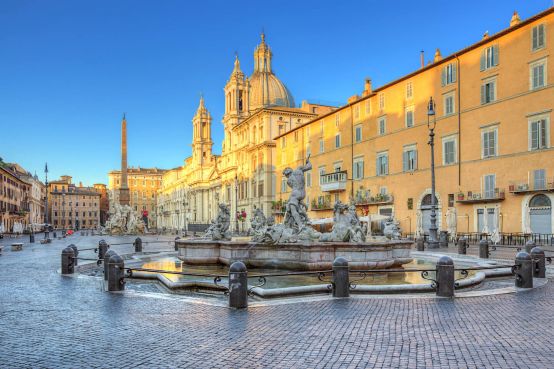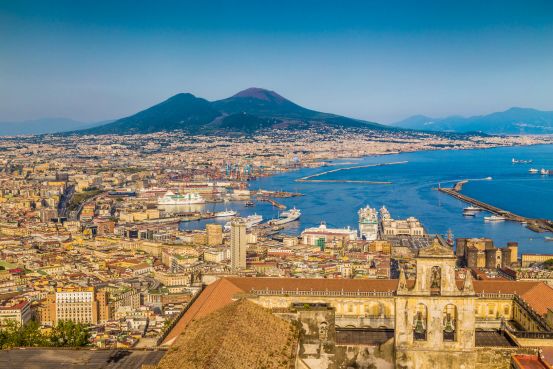The following walk takes a winding route of the Tiber river through the heart of Rome you'll encounter many interesting sites and monuments of the other Rome. Up until the construction of the embankments, in the late 19th Century, it was completely navigable and characterized by an unending sequence of buildings that faced onto and were reflected by its waters. The river was used for fishing, bathing; the water was used to drink and for motive power.
Our walk starts from the Isola Tiberina, which was of exceptional importance in the history of the birth and development of Rome. In fact, starting in extremely ancient times, the islands presence of a facilitated crossing of the river, leading to the building of the first permanent settlements on the surrounding high ground, the seven hills of Rome.
According to ancient tradition, the island was allegedly formed in the late 6th Century A.D. after the Etruscan kings were driven from Rome, when the people threw into the river, out of contempt for the monarchy, the wheat harvested on the Royal properties of Campus Martius. Another legend tells of a large boat grounded in the middle of the river during a flood, and later filled up with sand transported by the river.
In reality the island is situated on an ancient volcanic rock core similar to that upon which rests the nearby Capitol, but the shape does seem some what to resemble a ship. This did not escape the Romans who, in the 1st Century B.C. accentuated the shape; modeling the islands sides with travertine and raising an obelisk in the centre, like a majestic mast, This "stone ship" was meant to commemorate the beautiful ship of Aesculapius, the god of medicine, and his miraculous intervention.
Legend has it that in the 3rd Century B.C. during a plague, the Roman went by ship to Epidaurus, in Greece, to learn from the god Aesculapius how to escape the scourge. But, when the returning ship was ascending the river, the gods sacred serpent slipped out of it, at the point where the island was, indicating that that island was to be consecrated by him.
The construction of a building sacred to the god Aesculapius, where the present-day church of San Bartolomeo now stands, determined the definitive destination of the island to a place of medical treatment, also facilitated by its position segregated from the residential area. Today, still, stands the Fatebenefratelli Hospital which occupies almost the entire island.
The island is connected to the mainland by two bridges; the Cestio, connecting with the Trastevere bank, and the Ponte Fabricio which is the oldest bridge in Rome built around 62 B.C. From the island it is possible to see a third bridge, the Ponte Rotto, which collapsed in the late 16th Century. In the past, the bridge Ponte Fabricio was also know as "Ponte dei Guidei ( bridge of the Jews) because it joined the island to the Rome's Jewish Ghetto.
The Ghetto faces onto the Lungotevere Cenci with the monumental building of the Jewish Synagogue, built in 1904, today also the seat of the Israelite Museum of the Jewish community of Rome. Behind the synagogue is the Portico d'Ottavia, an ancient portico built at the end of the 1st Century B.C. by the emperor Augustus for his sister. Inside the monument stands part of the church of Sant'Angelo in Pescheria, so-called for the important fish market held here from the Middle Ages to the end of the 19th Century.
The church of Sant'Angelo was one of the four churches where Jews had to go every Saturday with the obligation of listening to the sermons aiming to convert them. It was possible to avoid doing so by paying a small fine, but more often the Jews preferred to fill their ears with wax!
Continuing southward, we reach the Forum Boarium, in ancient times the cattle market of Rome, and the Velabrum, once a stagnant marsh where, according to tradition, the basket with the twins Romulo & Remo was found.
The dominating monuments in the area are the two famous temples called the Vesta (in circular plan dedicated to Hercules) and the Fortuna Virilis (dedicated to the river god Portumnus).
On the far side of the road is the church of Santa Maria in Cosmedin, where beneath the portico stands the famous Bocca della Verità (Mouth of Truth). A large stone disk depicting the face of a faun or river god, with its mouth open. According to legend, the stone was used to judge peoples honesty; whoever told a lie while holding his hand in the mouth would loose his hand if they id not speak the truth.
Further along the waterway we find the imposing Castel Sant'Angelo, which was built by Emperor Hadrian, as a monumental tomb for himself and his successors. From the 13th Century it became an annex to the nearby Vatican, and the castle was used by Popes in times of danger.
The name Castel Sant'Angel derives from a miraculous event which took place in 590: Rome was in the midst of a severe plague, and Pope Gregory the great had organized a solemn procession in pray for its end. When the procession reached the tomb of Hadrian, Archangel Michael was seen flying up and sheathing his flaming sword, symbolizing the end of the Plague.









